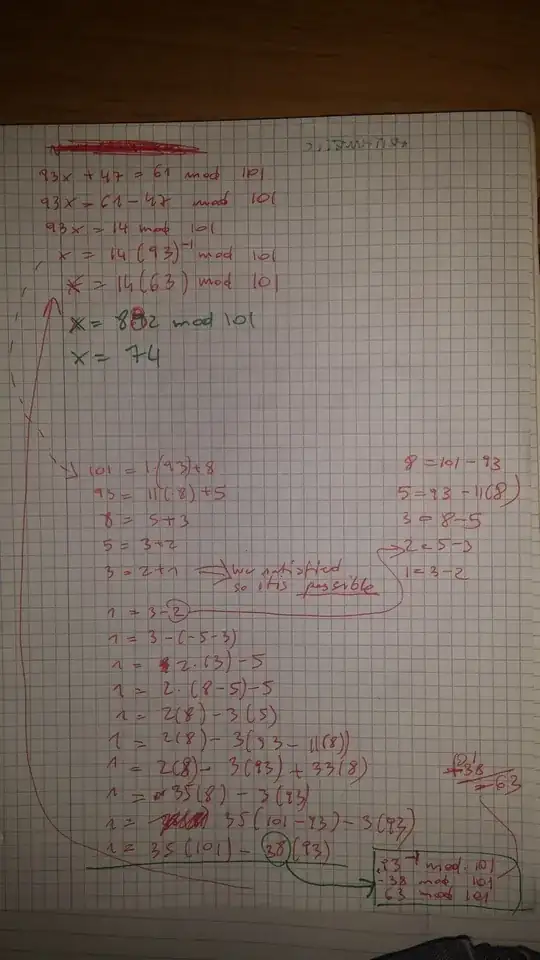I am preparing for an exam. I am dealing with this right now:
$$93x + 47 \equiv 61\pmod{101}$$
However, I can't figure it out. Can someone describe steps for this example, or provide a link to any free pdf, website describing this problem and the way it is solved on attached photo, please? I repeat it needs to be solved like on the photo.
Thanks in advance
Notes 